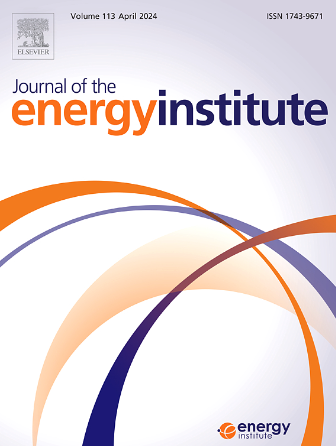The catalytic gasification of biochar by CeO2 nano-catalytic systems with different morphologies
IF 5.6
2区 工程技术
Q2 ENERGY & FUELS
引用次数: 0
Abstract
This paper investigates the potential of the rare earth catalyst CeO2 to catalyse the CO2 gasification of biomass-derived char. The hydrothermal process conditions were optimised to prepare CeO2 catalysts with varying morphologies and oxygen vacancy abundancies. The catalytic performance of CeO2 was examined in a laboratory-scale fixed-bed reactor during char gasification under CO2 atmosphere. The experimental results demonstrate that the increasing temperature and catalyst dispersion significantly enhance the gasification efficiency in CeO2-catalysed processes. The gasification performance of CeO2 nanocatalysts with varying morphologies (rod, cube, polygon) was assessed under identical experimental conditions. The morphology of the catalyst is indirectly related to its catalytic performance and catalytic structure, and the rod-shaped catalysts exhibit more oxygen vacancies. The CeO2-R(N) catalyst, which exhibited the highest oxygen vacancy content, gave the best catalytic performance. It is believed that these oxygen vacancies serve as active sites that enhance CO2 adsorption and activation, facilitating the Boudouard reaction and improving gasification efficiency. This morphology-driven variation in vacancy formation directly impacts the catalytic properties of CeO2, accelerating reaction kinetics and increasing syngas yield.
求助全文
约1分钟内获得全文
求助全文
来源期刊

Journal of The Energy Institute
工程技术-能源与燃料
CiteScore
10.60
自引率
5.30%
发文量
166
审稿时长
16 days
期刊介绍:
The Journal of the Energy Institute provides peer reviewed coverage of original high quality research on energy, engineering and technology.The coverage is broad and the main areas of interest include:
Combustion engineering and associated technologies; process heating; power generation; engines and propulsion; emissions and environmental pollution control; clean coal technologies; carbon abatement technologies
Emissions and environmental pollution control; safety and hazards;
Clean coal technologies; carbon abatement technologies, including carbon capture and storage, CCS;
Petroleum engineering and fuel quality, including storage and transport
Alternative energy sources; biomass utilisation and biomass conversion technologies; energy from waste, incineration and recycling
Energy conversion, energy recovery and energy efficiency; space heating, fuel cells, heat pumps and cooling systems
Energy storage
The journal''s coverage reflects changes in energy technology that result from the transition to more efficient energy production and end use together with reduced carbon emission.
 求助内容:
求助内容: 应助结果提醒方式:
应助结果提醒方式:


